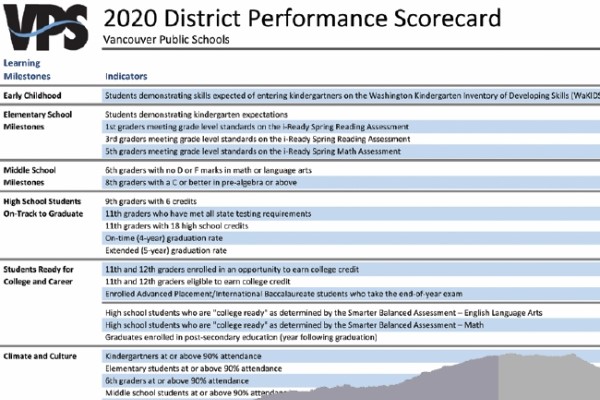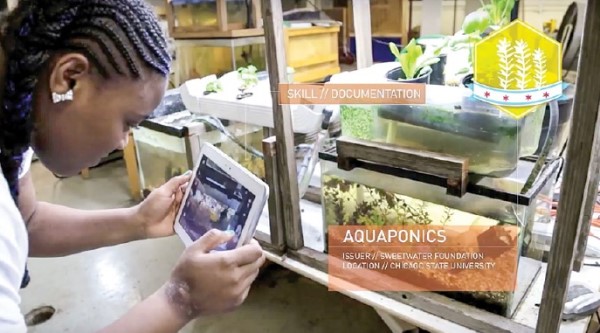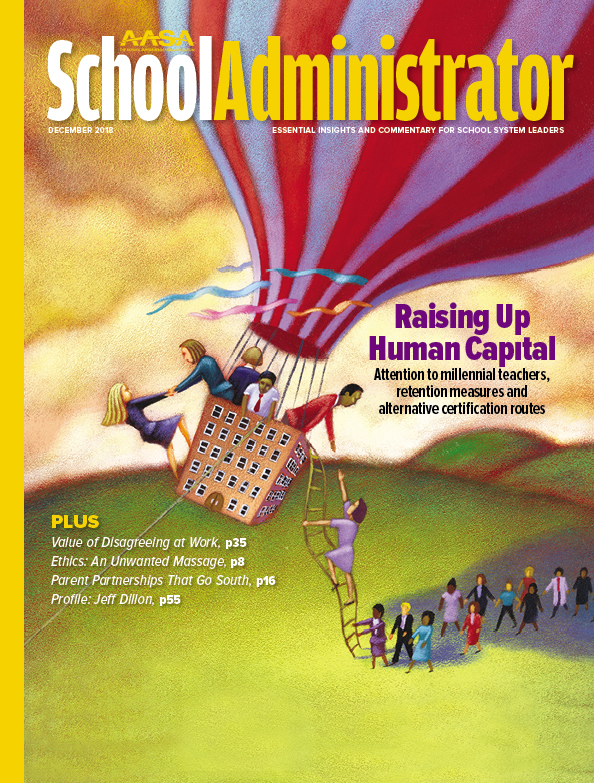January 2017: School Administrator

Measuring student skills and readiness through evidence-based credentials.
Advertisement
Additional Articles
-
A Case for Standards-Based Grading and Reporting
An expanded-format report card shares progress on student learning and work habits beyond a numerical mark.
-
 Three Lessons for Schools Shifting Their Grading
Three Lessons for Schools Shifting Their GradingLessons from the Solon Community School District in Iowa, one of the first in the country to use standards-based grading practices with all students.
-
 Keeping Score in Vancouver's Schools
Keeping Score in Vancouver's SchoolsThe superintendent in Vancouver, Wash., on his district's use of broad and balanced indicators to assess performance, including his own.
-
 At the Speed of Teaching: Data’s New Frontier
At the Speed of Teaching: Data’s New FrontierYes, big data has its place, but medium and small data will inform classroom instruction more usefully for educators and students.
-
 Hesitancy Toward the Job
Hesitancy Toward the JobWhat discourages applicants for superintendent posts?
-
 A Nuanced Recommendation
A Nuanced RecommendationIs a superintendent doubling as an adjunct professor obliged to write a recommendation letter for a manipulative advisee?
-
 What Constitutes Effective Blogging?
What Constitutes Effective Blogging?A tech-savvy superintendent points to compelling content that fits the local audience and the profession.
-
What’s the Root of School Board Conflict?
The author’s research findings on disharmony in governance sheds light on some soft spots in relationships.
-
 Boundary Issues for Staff Relationships
Boundary Issues for Staff RelationshipsAvoiding the liability of workplace romances.
-
Raising Engagement With Monetary Incentives
Greensboro N.C.'s program using go-betweens to link parents with their children's schools in innovative ways.
-
The Revisionists and the Traditionalists
Amidst cries for overhaul, administrators must preserve the historical common purpose of public schooling.
-
The Function and Dysfunction of Hiring
In Burlington, VT., various stakeholders, even students, help select qualified candidates.
-
.png?sfvrsn=2c854cfb_9) ‘It Used To Be a Good School’
‘It Used To Be a Good School’How many times have you heard the statement, “That used to be a good school”? I’ve heard that declaration many times throughout my career, and each time I wondered what the speaker meant.
-
 Redefining What’s Meant by Quality
Redefining What’s Meant by QualityAs long as we measure success by a test score, the achievement gap may never close.
-
Inside AASA: Gayane Minasyan and Deanna Atkins
The association's use of Twitter and other new tools to engage followers.
-
 Analyze, Then Act
Analyze, Then ActGuiding his Alabama schools in an unlikely digital transformation. Matt Akin, AASA member, profiled in the January 2017 issue of School Administrator.
Staff
Editor's Note
Reluctant Candidates
The myriad and complex challenges that confront those working as superintendents make it, at times, a thankless job. And apparently those widely publicized challenges are also a turnoff when it comes to career pursuits.
The choice of topic for our monthly State of the Superintendency infographic, always appearing on this page, was a compelling one. It highlights the primary reasons that many education administrators hesitate to apply for a superintendent’s post. In this case, the data displayed in the bar chart are drawn from a triennial snapshot of the superintendency produced by the New York State Council of School Superintendents with the group’s deputy director, Robert Lowry, providing the accompanying comments.
During the past 12 months, we’ve used the infographic to highlight trends about factors that impact the superintendent’s effectiveness, what superintendents see as their great skill areas, gender differences in marital status and where the superintendent expects to be five years hence, among other issues.
Typically, we draw on AASA’s periodic surveys as the basis of State of the Superintendency, and we benefit from the analysis of veteran researcher Robert McCord. With the latest AASA survey of superintendent salaries and related matters being released publicly in the next month, you can expect to find fresh insights about the profession on this page in the months to come.
Advertisement
Advertisement






